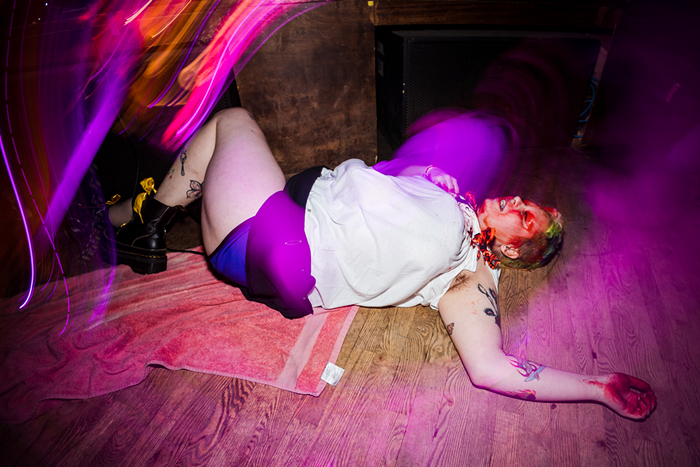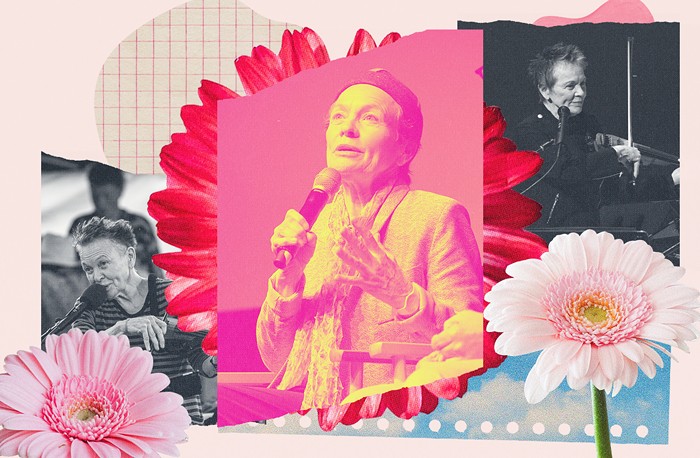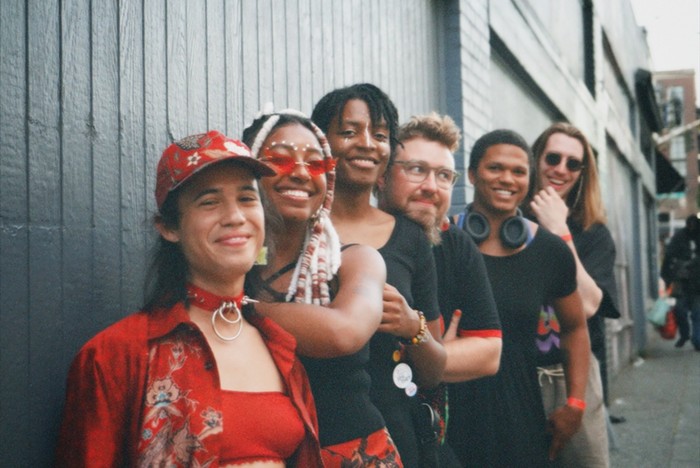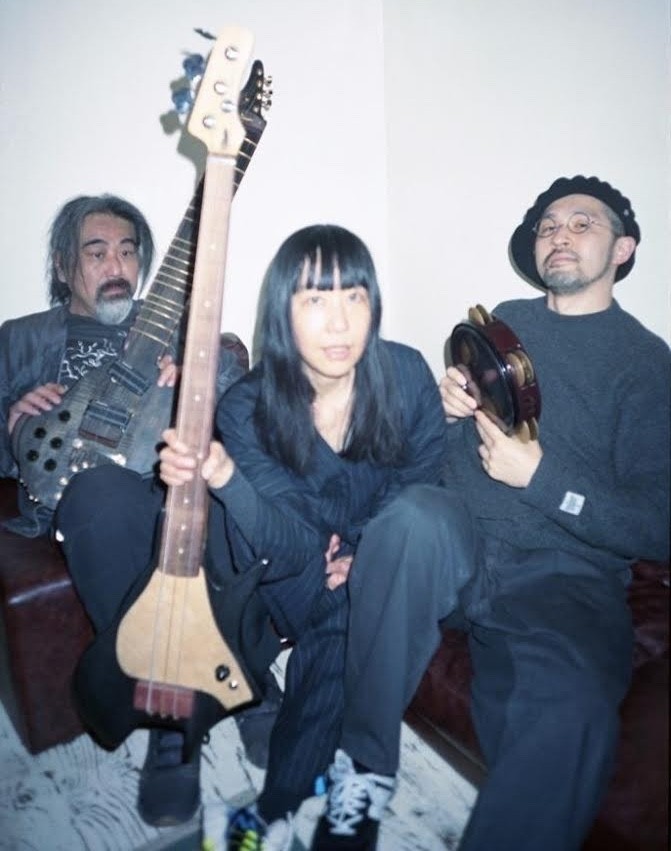
Seattle Symphony french horn player John Turman will never forget the moment the music stopped in Benaroya Hall.
The orchestra had been deep into rehearsals for Tchaikovsky Symphony No. 5, a popular piece about securing "ultimate victory through strife." To give you a sense of the music's resonance in the motherland, officials ordered the Leningrad Radio Symphony Orchestra to play the symphony "to keep up the spirits of the city’s population" as the Nazis bombed the capital during the siege back in 1941. Allies listening in on the live broadcast "could hear the sound of bombs falling nearby." Nevertheless, the band played on.
Just as Turman was preparing to play the second movement's famous horn solo, which sounds like an oboe saving a french horn from suicide, symphony president and CEO Krishna Thiagarajan burst through the stage door and told everyone to go home. The pandemic had become serious. The state was shutting down.
The musicians scattered, thinking they'd meet again in a week or two. Maybe a month. But as we all know now, those projections fell well short of reality.
Though the organization has since launched a streaming service featuring live, sparsely staffed, and mostly masked performances, the symphony orchestra won't reach its full strength until the new season begins this coming fall. Bigger works with lots of horns and a chorale won't see the stage until well into 2022.
For many members of the city's premier orchestra, the pandemic has been a "total mindfuck," to quote Turman. It changed everything, as wildly mismanaged and deadly respiratory viruses tend to do.
The orchestra members themselves, who must practice together weekly to make a unified sound, took huge pay cuts and essentially disbanded. With no shows coming up, musicians who'd practiced nearly every single day since childhood suddenly had no reason to pick up their instruments. With no live audiences, a powerful form of external validation vanished.
And like any other athlete, symphony musicians need to stay in shape—both as individuals and as a team. Each of the violin players must match the speed and intensity of the others. When the trumpets speak, the french horns need to know how loudly to respond. Most players share a music stand with their neighbor. That's how closely they need to sit. Touching distance.
Though COVID-19 safety protocols allowed some of the musicians to return to the stage for livestreamed performances in a mostly empty hall, they also forced instruments six feet (and in some cases nine feet) away from one another. That distance changed the way the musicians played.
Associate principal cello Meeka Quan DiLorenzo likened the situation to a dinner at a restaurant. "Imagine sitting at a table where you're six feet away instead of right next to each other. And instead of one person it’s like 30 people. It’s just harder to have the conversation. It’s not impossible, and I think the orchestra has done a really good job of accommodating to our new surroundings, but it is difficult," she said.
As the symphony slowly adds more musicians to the stage (and a very limited number of audience members into the hall), "we just have to learn how to hear each other again," said Eric Han, another cellist with the symphony.
"The orchestra is a huge organism of sound, and you really need to ride the wave together," he added. "When things are falling into place or flowing organically, the ensemble breathes a lot better together. That’s just something we’ll probably have to warm up to as we add more bodies to the stage. We have to trust each other and get the wave rolling again."
Now that the organism is slowly starting to piece itself back together, I asked a few of the musicians how the pandemic impacted their lives, their families, and their play.
"I couldn't have felt less essential"
After staying home and staying safe for a few weeks, Turman sank into an early pandemic depression. He stopped playing his horn regularly for two or three months, the longest he'd ever not played. He felt as if the years he'd spent training to work as a classical musician held no real value, either for himself or for the community he ostensibly served.
"I'm not sure how all my other colleagues felt, but at that point I couldn't have felt less essential," he said. "We need doctors and nurses, and here I am just spitting into a tube and sound comes out."
After weeks of wallowing, Turman poured his energy into turning the symphony's "Tiny Tots" program into a streaming show. The entry-level family program serves young kids between the ages of 0 and 5, introducing them at a very basic level to the sounds of the different instrument families.
He called up the brass quintet and asked them to record a piece to a click track on their phones. The other musicians eagerly agreed to the plan—of all the instruments, brass players knew they were the least safe, as all that blowing could produce a lot of virus-laden droplets. They each recorded their sections, and then Turman edited the show together.
The first virtual performance of Tiny Tots was a hit. Parents desperate to find something for their homebound children to do embraced the show. They wrote in to thank the musicians, and to tell stories about digging out "grandpa's old trumpet from the attic" so their kids could play along.
Other sections of the orchestra expressed interest in helping out, and the symphony started producing episodes once every couple months. Turman tapped into his background in filmmaking and audio engineering to expand his production cred.
"I felt for the parents of young kids during the pandemic—can you imagine? It felt good to lighten their load a little, or to add a little brevity to the experience of quarantine," he said.
He played his first concert with an audience at the end of April. The french horns—all vaccinated—played a major role in a piece from Schumann. Hearing the live applause of 100 people after well over a year of silence floored him. It was "exhilarating" just to hear "even a little bit of applause" and to make eye contact with people who wanted so badly to hear live music in a big hall that they put up with all the extra health measures.
"It made me feel like what I do matters," he said.
This upcoming season, Turman expects the musicians to go all-out onstage. "Everyone is going to put their entire chest into playing," he said.
Putting down her cello for the first time in 17 years
Associate principal cello Meeka Quan DiLorenzo said she could tell the end was near last spring when concert attendance started getting "unusually sparse," but that didn't make the decision to leave the stage any less scary. "There was a collective terror about what to do," she said.
With a high-risk husband and a school-aged kid at the house, DiLorenzo put down her cello for the first time in 17 years. She didn't pick it back up again until August.
She'd never taken a break that long before for fear of losing her touch. "Even when I was pregnant and delivered my son, I think I took 10 days off," she said. "That’s the kind of person I am; make sure you don’t get out of shape, make sure if you need to you can play a concert within a week's notice."
But a career of play had led to "pretty much constant" aches and pains in her neck and shoulder. With 25 years left before retirement, she thought she might as well squeeze in a break.
Her body appreciated her choice, as did her family. Her pains healed, and the whirlwind hustle of life in a family run by two professional musicians slowed to a manageable pace for the first time.
The family played games at night, watched movies together, took long walks, cleaned the house, and finally made that trip to drop off clothes and toys at Goodwill.
When the option to start playing again in September arose, she started slowly getting back in shape by playing scales for fifteen minutes at a time. "If I had try to play something real I would have just cried and melted into a puddle," she said.
Her stamina returned before the fall, when she played only the shows without brass—too many droplets. And now that she's back full time, she's working to meet the challenge of playing six feet away from her fellow players.
Despite the awkwardness, though, she's glad to be back onstage.
"The family was grateful for the time we got to spend with each other, but too much togetherness is real," she said with a laugh.
That said, she does plan to continue protecting more of her time. "Before, I just blindly participated in as many things a possible to keep myself busy. But now I think I'll be more thoughtful about it," she said.
"Probably the luckiest orchestral viola in the world"
Viola player Olivia Chew joined the symphony in the middle of the pandemic. Though most of her coworkers don't know what the bottom half of her face looks like, she counts herself as "probably the luckiest orchestral viola in the world."
She had auditioned for the Seattle Symphony in mid-February, just after COVID-19 touched down in Seattle but about a month before the state did anything about it. She got the job and moved across the country in August, narrowly escaping a furlough at the Rochester Philharmonic.
"It's amazing: of all the orchestras I could have won an audition for it was one of the few that had a season this year, and it's so lucky we’ve been able to do concerts every week and have some semblance of normalcy in the schedule and in the season," she said.
During the first wave of the pandemic, she took a couple weeks off to play Animal Crossing, but on the whole she continued to play her instrument, which came as a welcome surprise for her. "It was kind of reaffirming. It made me feel like I made the right choice going to music," she said.
Like a lot of other musicians, she fulfilled her desire for an audience by spending time on Acapella, a multi-tracking video recording app that can turn a single musician into an orchestra. She'd perform little viola quartet arrangements of pieces from operas, symphonies, or video games, and then send the videos to friends.
Though she enjoyed the feedback she got on the app, the digital plaudits couldn't replace the energy of a live audience. A couple weeks ago she played for the first time in front of "like 10 people," mostly symphony staffers. "To hear the applause after a piece after months of just silence—even though it was so small—is incredible, it gave us all life," she said.
"I was making the living room a mess, but I was loving it"
Eric Han, a cellist with the symphony, echoed Chew's feelings about playing before a live audience. He said he even misses the cell phone interruptions, or the sound of people laughing or talking between movements.
"For me it’s a true form of communication between myself and my colleagues onstage and also the people enjoying it offstage. Not having that energy to bounce off of when you perform into an empty hall—it’s a different dynamic. We’re not really trained for it. It’s something that we all miss very dearly," he said.
Rather than take a break during the pandemic, Han started playing his instrument even more than he had in the past.
After a few weeks of limbo—lots of cooking and cleaning and binge-watching Breaking Bad—he dug into repertoire he'd never had time to learn and perfect, everything from pop crossover stuff to Bach suites.
He also picked up a new quarantine skill. The latches on his cello case broke off after many years of wear and tear, so he looked up some YouTube vids and learned how to rivet latchets. He started working on his own cases, but then moved on to fix his colleagues' cases for fun. "I was making the living room a mess, but I was loving it," he said.
But he didn't stay cooped up in the house for long. When violent attacks on Asians shot up in Seattle, Han joined the movement to stop Asian hate. Back in April, he and his stand partner, Nathan Chan, performed Korean folk songs during a rally organized by the Seattle Rice Society at Hing Hay Park. The performance not only allowed him to contribute to a movement by "representing the beauty of our heritage through music," but also to reconnect with his friend and coworker. "It was a reassurance that we played well together and we really get along well. We complement each other’s playing with our individual strengths," he said.
In all, the forced isolation and all the calls for justice made him realize that "we need to treat each other better, and we need to appreciate the small, subtle things that are so powerful and beautiful."
"Going forward, if we could collectively just enjoy and respect each other’s beliefs and each other’s thoughts on life—I just think that we will go so much further than where we were," he said.



















